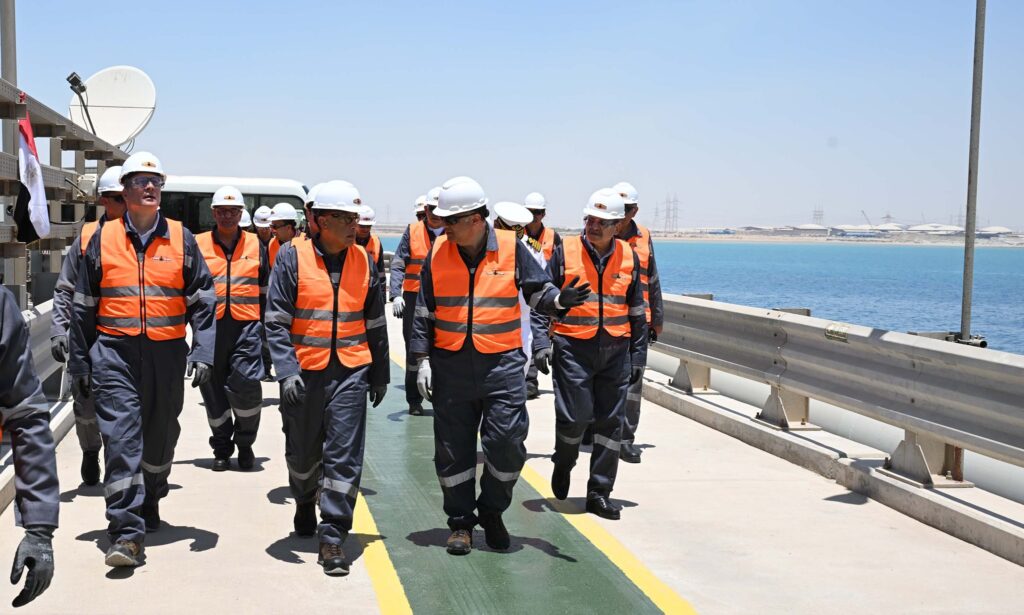Prime Minister Mostafa Madbouly led an inspection tour to follow up on developments in preparing the infrastructure at Ain Sokhna port so that the second FRSU to start operations.
Madbouly began his tour by inspecting the Energos Eskimo Floating Storage Regasification Unit (FSRU).
During his inspection tour, Madbouly reviewed the technically advanced works that Petrojet will be finalising within days . These works are in preparation for operating the FSRU, after which it will be transferred to the Arab Petroleum Pipelines Company (SUMED) port berth in Sokhna. The FSRU has a capacity of 750 million cubic feet of gas per day (mmcf/d).
During the visit, Minister of Petroleum and Mineral Resources, Karim Badawi, explained that petroleum sector teams have finished preparing a second berth at SUMED port to receive the FSRU. This includes installing loading arms and pipelines to transfer gas to the national grid. He noted that the teams are currently working with high efficiency and speed to complete the technical work related to the vessel, conducting continuous field monitoring to track progress and ensure swift completion.
Madbouly and his accompanying delegation have also visited the second berth at SUMED Company’s port to inspect its readiness to receive the FSRU Energos Eskimo, after finishing the technical work. The Prime Minister also inspected the ongoing operations for receiving imported liquefied natural gas (LNG) by the first FSRU, Höegh Galleon, at the port, in which the LNG is being converted back to a gaseous state and injected into the national natural gas grid to supply various consumption sectors and meet demand.
Madbouly listened to a presentation by Yassin Mohamed, Chairman of the Egyptian Natural Gas Holding Company (EGAS). Mohamed clarified that the petroleum sector contracted Höegh LNG Company to lease the FSRU to boost the gas supply in the network.
The new FSRU is the third regasification unit used by the ministry within an integrated system to secure gas supplies, particularly for power plants and vital sectors. It allows for the reception of imported LNG shipments, their regasification, and injection into the national gas grid — contributing to the diversification of supply sources and achieving sustainability amid current regional challenges. The first FSRU is the Höegh Galleon, while the second one is the Energos Power, which was received in May.
“By early July, we will have three regasification units providing the national grid with gas to inject into the national gas grid to secure the needs of the Egyptian state.”
Egypt has an integrated vision to meet the state’s needs during a transitional period until its natural gas production returns its levels before the economic crisis.
Besides increasing gas imports to cover the local demand, the state is fully committed to paying the dues of foreign partners. They are also being encouraged through a set of incentives to enable them to increase production.
In a separate note, Badawi revealed that a fourth vessel will arrive next August and will be operated in Damietta on the Mediterranean Sea. This is to ensure stability and diversification of energy supplies in light of current global challenges.
Following the inspection tour in Ain Sokhna, Madbouly visited the National Gas Control Center (NATA), which is operated by the Egyptian Natural Gas Company (GASCO). During the visit, Badawi pointed out that the flexibility and efficiency of the national natural gas grid play a crucial role in enabling the Egyptian state to rapidly handle various emergencies and natural gas supply scenarios, as well as diversify its sources. He emphasized that without this flexibility, it would not have been easy to confront the current challenges and secure supplies.




